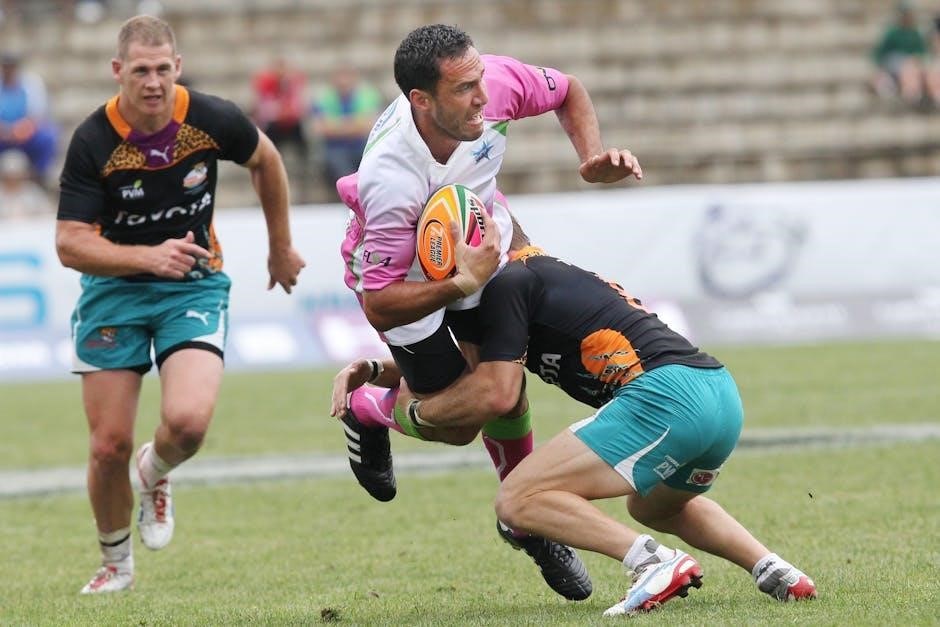
biofinity multifocal contact lenses fitting guide
Biofinity Multifocal Contact Lenses, featuring Balanced Progressive Technology, offer seamless vision correction for presbyopia and astigmatism, providing a natural transition between near, intermediate, and far distances effortlessly.
What Are Biofinity Multifocal Contact Lenses?
Biofinity Multifocal Contact Lenses are premium, silicone hydrogel lenses designed to address presbyopia and astigmatism simultaneously. Featuring Balanced Progressive Technology, they provide a seamless transition between near, intermediate, and far vision. These lenses are tailored to meet the unique needs of patients with astigmatism, offering over 200,000 unique prescription options to ensure a precise fit. With their advanced Toric Lens Geometry, Biofinity Multifocal lenses deliver exceptional clarity and comfort, making them suitable for daily wear. They are crafted from breathable materials that retain moisture, ensuring long-lasting comfort and clear vision throughout the day. These lenses are an excellent choice for individuals seeking a natural, adaptive solution to correct multifocal vision needs without compromising on convenience or performance.
Benefits of Biofinity Multifocal Lenses
Biofinity Multifocal lenses offer numerous advantages, including seamless vision correction for presbyopia and astigmatism. Their Balanced Progressive Technology ensures a natural transition between near, intermediate, and far distances, reducing visual fatigue. With over 200,000 unique prescriptions, these lenses cater to a wide range of needs, providing precise and personalized correction. The advanced Toric Lens Geometry enhances clarity and maintains proper orientation, while the silicone hydrogel material promotes breathability and moisture retention for all-day comfort. This makes them ideal for individuals seeking a versatile, high-performance solution that combines sharp vision with exceptional comfort. Their design supports long-lasting wear, making Biofinity Multifocal lenses a practical choice for active lifestyles without compromising on visual acuity or ease of use.
How Biofinity Multifocal Lenses Differ from Other Multifocal Lenses
Biofinity Multifocal lenses stand out with their unique Balanced Progressive Technology, offering a smoother transition between near, intermediate, and far vision compared to other multifocal lenses. Unlike many competitors, they utilize advanced silicone hydrogel material for exceptional breathability and moisture retention, enhancing comfort during extended wear. Additionally, Biofinity lenses cover 99.6% of astigmatic presbyopes, providing a wider range of prescription options. Their design minimizes visual disturbances and adapts seamlessly to varying lighting conditions. Furthermore, the fitting process for Biofinity lenses often avoids the use of a phoropter, instead recommending handheld trial lenses or a flipper for precise customization. This combination of innovative technology, material quality, and tailored fitting makes Biofinity Multifocal lenses a superior choice for individuals seeking both clarity and comfort in multifocal correction.
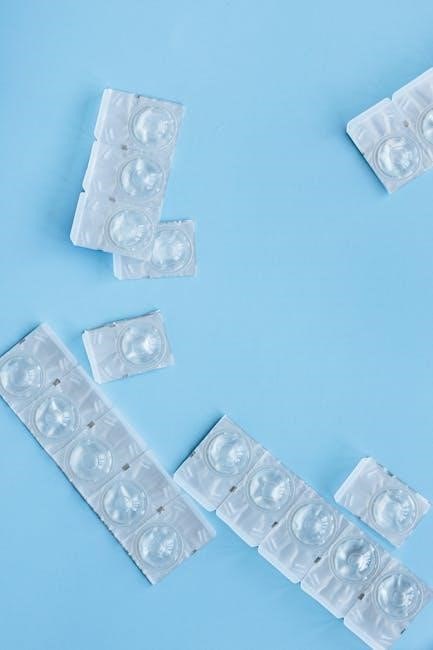
Understanding the Fitting Process
Fitting Biofinity Multifocal lenses involves a detailed evaluation of the patient’s vision needs and prescription requirements, using tools like the CooperVision OptiExpert App for precise measurements and recommendations to ensure optimal lens alignment and comfort, while also considering factors such as pupil size and near vision demands to customize the fit effectively.
Pre-Fitting Evaluation and Patient Selection
A thorough assessment of the patient’s visual needs, lifestyle, and eye health is critical before fitting Biofinity Multifocal lenses. This includes evaluating visual acuity, tear quality, and corneal health to ensure suitability for contact lens wear. Patients with presbyopia or significant near vision demands are ideal candidates. Assessing pupil size, refractive error, and binocular vision is also essential to determine the correct lens parameters. A detailed discussion of the patient’s expectations and lifestyle helps tailor the fitting process. Proper patient selection ensures a successful adaptation to multifocal lenses, minimizing potential discomfort or vision issues. This step is crucial for achieving optimal results and patient satisfaction with Biofinity Multifocal lenses.
The Importance of Balanced Progressive Technology
Biofinity Multifocal lenses utilize Balanced Progressive Technology (BPT), which ensures a seamless transition between near, intermediate, and far vision zones. This advanced design addresses the unique challenges of presbyopia by providing clear, sharp vision at all distances. BPT integrates multiple zones within the lens, optimizing the way light enters the eye and reducing halos or glare. Unlike traditional multifocal designs, BPT minimizes the “swim” effect, offering stable vision during eye movements. This technology adaptively responds to the wearer’s visual needs, making it ideal for patients with active lifestyles. Proper fitting leveraging BPT ensures a natural viewing experience, enhancing both convenience and satisfaction for Biofinity Multifocal users.
Using the CooperVision OptiExpert App for Fitting
The CooperVision OptiExpert App is a powerful tool designed to streamline the fitting process for Biofinity Multifocal lenses. This innovative app provides a comprehensive approach to patient evaluation, leveraging dynamic simulations to predict lens performance. It allows practitioners to visualize how the lenses will adapt to the patient’s eyes, ensuring an accurate fit. The app also offers a virtual try-on feature, enabling patients to experience the benefits of multifocal vision before the actual trial. By integrating patient data and lifestyle preferences, OptiExpert helps practitioners make informed decisions. This technology enhances efficiency, improves patient communication, and ensures a more personalized fitting experience. Regular updates to the app further refine its capabilities, making it an indispensable resource for optimal Biofinity Multifocal lens fitting.

Patient Selection Criteria
Selecting suitable candidates for Biofinity Multifocal lenses involves evaluating age, presbyopia presence, lifestyle, and adaptability to multifocal vision. Proper hygiene and realistic expectations are crucial for success.
Who Is a Suitable Candidate for Biofinity Multifocal Lenses?
The ideal candidate for Biofinity Multifocal lenses is typically an adult experiencing presbyopia, usually between the ages of 40 and 60. They should have a refractive error within the lens parameters and no significant ocular surface disease. Candidates should demonstrate good hand-eye coordination for lens handling and maintain proper hygiene practices. Active individuals seeking crisp, clear vision at all distances, including near, intermediate, and far, are well-suited. Motivation to adapt to multifocal optics is essential, as some patients may need time to adjust. Realistic expectations about lens performance and a willingness to follow care instructions are crucial for long-term satisfaction and comfort with Biofinity Multifocal lenses.
Assessing Patient Needs and Lifestyle
Assessing a patient’s needs and lifestyle is critical for successful Biofinity Multifocal lens fitting. Consider their daily activities, such as reading, computer use, or hobbies requiring clear near or intermediate vision. Evaluate their work environment and whether they engage in activities like driving or sports, which may demand sharp distance vision. Lifestyle factors, such as preference for daily disposable lenses or willingness to care for monthly replacement lenses, should also be discussed. Understanding their visual priorities helps tailor the lens selection to their unique requirements. For example, a patient who spends extensive time on digital devices may benefit from lenses optimized for intermediate vision. This personalized approach ensures the lenses align with their daily routines and expectations, enhancing overall satisfaction and comfort with Biofinity Multifocal lenses.
Handling Patient Expectations and Motivation
Managing patient expectations and motivation is essential for a successful Biofinity Multifocal lens fitting. Patients may have preconceived notions about multifocal lenses, so clear communication is key to setting realistic goals. Emphasize the potential benefits, such as reduced dependence on glasses and improved convenience, while addressing concerns about adaptation time. Motivation can be strengthened by highlighting how Biofinity Multifocal lenses align with their lifestyle and visual needs. Use tools like the CooperVision OptiExpert app to demonstrate the lenses’ capabilities and reassure patients about the fitting process. Building trust and providing encouragement during the adaptation period helps maintain patient motivation and ensures a positive experience with Biofinity Multifocal lenses.
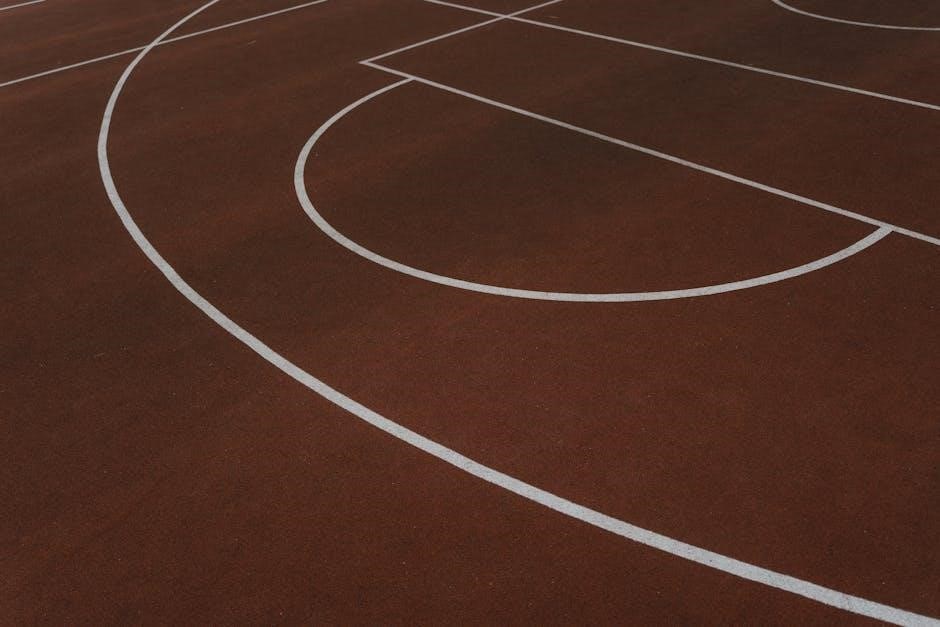
Trial Lens Fitting
Trial lens fitting is an essential step in determining the optimal Biofinity Multifocal lenses for patients, ensuring proper fit, clarity, and comfort for near, intermediate, and far vision.
Step-by-Step Guide to Trial Lens Fitting
- Begin by ensuring the patient’s eyes are clear of any debris or existing lenses.
- Insert trial lenses, either manually or by patient self-insertion, to assess initial fit and comfort.
- Evaluate lens centration, movement, and coverage to ensure proper positioning on the eye.
- Assess near, intermediate, and far vision clarity, making note of any visual disturbances.
- Check for comfort and adaptability, allowing a few minutes for the patient to acclimate.
- Make adjustments or try alternative lenses if vision or comfort issues arise.
- Document findings and patient feedback to guide final lens selection.
This systematic approach ensures accurate and efficient trial lens fitting for Biofinity Multifocal lenses.
Optimizing Fit Using Handheld Lenses or a Flipper
Handheld lenses and a flipper are essential tools for optimizing the fit of Biofinity Multifocal lenses. These devices allow practitioners to quickly compare different lens powers and designs, ensuring the best possible fit and visual performance. The flipper, in particular, streamlines the process by enabling rapid exchange of lenses without requiring multiple trial sets. This method saves time and enhances patient comfort during the fitting process. By using handheld lenses, practitioners can assess lens centration, movement, and adaptation on the eye, making precise adjustments for optimal vision at all distances. This approach ensures a more accurate and efficient fitting experience, tailored to the patient’s unique needs.
Avoiding the Use of a Phoropter in Fitting
Avoiding the use of a phoropter during the fitting of Biofinity Multifocal lenses is recommended, as it does not provide accurate measurements for contact lens fitting. Phoropters are primarily designed for determining eyeglass prescriptions and do not account for the unique physiology of the eye when wearing contact lenses. Instead, rely on precise keratometry readings and refraction results to determine the correct lens parameters. Trial lenses should be used to directly assess fit, centration, and visual acuity. This approach ensures a more accurate and patient-specific fitting process, minimizing the need for adjustments and improving overall satisfaction. Using trial lenses also allows for real-time feedback, making the fitting process more efficient and effective for Biofinity Multifocal lenses.
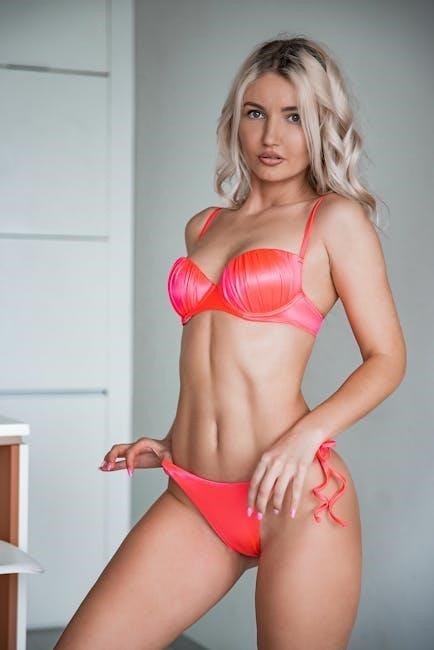
Verification and Validation
Verification ensures the correct fit and alignment of Biofinity Multifocal lenses, while validation confirms patient satisfaction and comfort, ensuring optimal visual performance and adaptation.

How to Verify the Correct Fit of Biofinity Multifocal Lenses
Verification involves assessing lens fit, centration, and movement to ensure optimal alignment with the patient’s eyes. Use a biomicroscope to evaluate the lens-to-cornea alignment and ensure proper positioning. Check for adequate movement during blinking, as excessive or limited movement can indicate poor fit. Additionally, verify the correct near, intermediate, and far vision using trial lenses or the CooperVision OptiExpert app. Patient feedback on vision clarity and comfort is crucial; Ensure the lenses do not cause ocular surface issues or discomfort. Proper fit minimizes adaptation time and enhances visual outcomes. Accurate verification ensures the lenses meet the patient’s refractive and lifestyle needs effectively.
Validating Patient Satisfaction and Comfort
Validating patient satisfaction and comfort is essential to ensure a successful fitting. Begin by asking the patient about their visual experience, focusing on clarity, depth perception, and ease of adaptation. Assess comfort levels, inquiring about any sensations of dryness, irritation, or awareness of the lenses. Use a standardized satisfaction questionnaire or rating scale to quantify feedback. Observe the patient’s ability to perform daily tasks, such as reading or using digital devices, to gauge functional vision. Positive feedback indicates proper fit and alignment, while concerns may require adjustments. Regular follow-ups are crucial to monitor long-term satisfaction and address any evolving needs. Patient comfort and satisfaction are key to successful long-term use of Biofinity Multifocal lenses.
Documenting Fitting Results for Follow-Up
Accurate documentation of fitting results is crucial for effective follow-up care. Record the selected lens parameters, including power, diameter, and add. Note the patient’s visual acuity at near, intermediate, and far distances. Document any subjective feedback, such as comfort levels or vision clarity. Include observations of lens centration, movement, and overall fit. Photographic documentation of the lens on the eye can also be beneficial for comparison during follow-ups. Maintain detailed records in the patient’s file or electronic health record (EHR) for easy retrieval. This documentation serves as a baseline for future evaluations, ensuring consistent care and addressing any changes in the patient’s needs. Proper documentation is key to optimizing long-term satisfaction with Biofinity Multifocal lenses.

Handling and Care
Proper handling ensures lens longevity and eye health. Clean lenses with recommended solution, store them correctly, and avoid touching the surface. Replace as directed.
Proper Handling Techniques for Biofinity Multifocal Lenses
Always handle Biofinity Multifocal lenses with clean, dry hands to prevent contamination. Gently rinse lenses with an approved multipurpose solution before insertion. Avoid touching the lens surface to minimize the risk of deposits. Use the correct storage case and replace it regularly to maintain hygiene. Clean the case with solution and air-dry it to prevent bacterial growth. Never share lenses or use expired solutions, as this can compromise lens integrity and eye health. Handle lenses by the edges to avoid central surface contact, ensuring optimal vision clarity. Store lenses in the provided case when not in use, and replace them as prescribed to maintain comfort and performance.
Care and Maintenance Tips for Longevity
To ensure the longevity of Biofinity Multifocal lenses, clean and disinfect them daily with a high-quality multipurpose solution. Avoid using tap water, as it may contain impurities harmful to the lenses. Always store lenses in a clean, dry case, replacing the solution entirely each time. Protein deposits can be removed with a gentle cleaning solution, but never use harsh chemicals. Replace the storage case every 1-3 months to prevent bacterial buildup. Follow the recommended replacement schedule to maintain lens performance and eye health. Proper care extends the life of the lenses and ensures consistent comfort and vision clarity. Regularly cleaning and maintaining the lenses prevents complications and enhances overall satisfaction.
Importance of Proper Hygiene Practices
Proper hygiene practices are crucial for maintaining healthy eyes and ensuring the longevity of Biofinity Multifocal lenses. Always wash hands thoroughly with soap and water before handling the lenses to prevent transferring bacteria or other contaminants. Avoid touching the lenses with unwashed hands or sharing makeup, as this increases the risk of infection. Clean and rinse the lenses with a recommended solution, and never reuse or top off the solution. Replace the lens case regularly and ensure it is clean and dry. Proper hygiene reduces the risk of complications such as corneal ulcers or conjunctivitis, ensuring clear vision and comfort. Consistent hygiene habits also prevent protein deposits, keeping the lenses comfortable and functional for their intended lifespan.
Troubleshooting Common Issues
Address discomfort or vision clarity problems by ensuring proper fit and hygiene. Resolve near or intermediate vision issues by adjusting lens power or design. Consult a practitioner for persistent problems, ensuring optimal comfort and clarity for patients adapting to Biofinity Multifocal lenses.
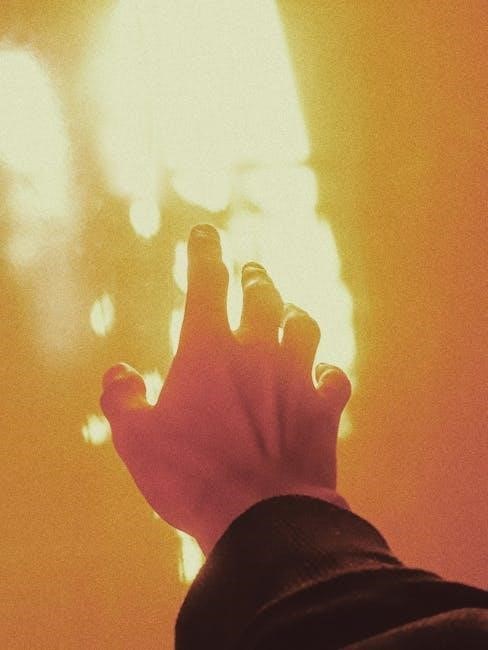
Addressing Discomfort or Vision Clarity Problems
Discomfort or vision clarity issues with Biofinity Multifocal lenses can often be resolved by ensuring proper fit and hygiene. If patients experience dryness or irritation, consider recommending lubricating eye drops or adjusting the lens fit to reduce friction. Vision clarity problems may arise from improper lens power or deposits on the lens surface. Ensure patients follow proper cleaning and disinfection routines to maintain lens clarity. If issues persist, reassess the prescription or consider alternative lens designs. Consulting with a practitioner is crucial to address specific concerns and ensure optimal comfort and vision correction, tailored to the patient’s unique needs and lifestyle.
Resolving Issues with Near or Intermediate Vision
For patients experiencing difficulty with near or intermediate vision using Biofinity Multifocal lenses, it’s essential to reassess the lens fit and prescription. Ensure the lenses are centered correctly to maximize the intermediate and near zones. If issues persist, consider adjusting the power of the lenses or using the Balanced Progressive Technology to optimize visual clarity. Utilizing tools like the CooperVision OptiExpert app can help refine the fit and address specific visual demands. Patients may need time to adapt to the multifocal design, so encouraging feedback and follow-up appointments is crucial. If problems remain unresolved, exploring alternative multifocal or monovision configurations might be necessary to improve visual performance and patient satisfaction.
When to Consider Alternative Solutions
If Biofinity Multifocal lenses fail to meet a patient’s visual or comfort needs despite proper fitting and adjustments, alternative solutions may be necessary. This could include switching to a different multifocal design, monovision, or even exploring other contact lens modalities like daily disposables or rigid gas-permeable lenses. In some cases, patients may benefit from combining contact lenses with reading glasses or transitioning to eyewear. The decision to explore alternatives should be based on the patient’s lifestyle, visual priorities, and adaptation capabilities. Open communication and professional guidance are key to ensuring the best possible outcome for the patient’s vision and satisfaction.
Follow-Up and Aftercare
Regular follow-ups are crucial to monitor adaptation, address concerns, and ensure long-term comfort and vision clarity. Schedule appointments to assess lens performance and patient satisfaction.

Recommended Follow-Up Schedule

A structured follow-up schedule ensures optimal adaptation and comfort with Biofinity Multifocal lenses. Begin with an initial assessment within 1–2 weeks post-fitting to evaluate comfort and vision clarity. Schedule subsequent visits at 4–6 weeks to monitor progress and address any adaptation issues. Annual check-ups are recommended to maintain eye health and verify lens performance. Adjustments may be needed based on patient feedback or changes in prescription. Regular follow-ups help prevent complications and ensure long-term satisfaction. Consistency in scheduling is key to managing multifocal lens wear effectively and addressing any emerging concerns promptly.
Clinical Tips for Ongoing Care
Regular check-ups are essential for maintaining optimal comfort and vision with Biofinity Multifocal lenses. Ensure patients understand the importance of proper hygiene and lens care to prevent complications. Monitor corneal health and lens fit during follow-ups, as multifocal lenses may require adjustments over time. Educate patients on recognizing signs of improper fit, such as blurred vision or discomfort. Encourage consistent wear schedules and proper cleaning routines to extend lens longevity. Address any adaptation issues promptly, as patience is key for multifocal lens success. Reinforce the importance of attending all recommended follow-ups to ensure ongoing satisfaction and eye health. These clinical tips help maintain a positive experience for patients using Biofinity Multifocal lenses.
Monitoring Patient Adaptation and Satisfaction
Regular follow-ups are crucial to monitor how patients adapt to Biofinity Multifocal lenses. Assess their comfort, vision clarity, and ability to perform daily tasks. Use patient feedback to identify any challenges with near, intermediate, or far vision. Check for signs of adaptation issues, such as eye strain or difficulty switching focus. Educate patients on realistic expectations and the time needed for their eyes to adjust. Use tools like questionnaires or visual tests to measure satisfaction. Address any concerns promptly, as early intervention can improve adaptation. Encourage open communication to ensure patients feel supported throughout the process. Monitoring adaptation ensures long-term success and patient confidence in their Biofinity Multifocal lenses.
Leave a Reply
You must be logged in to post a comment.